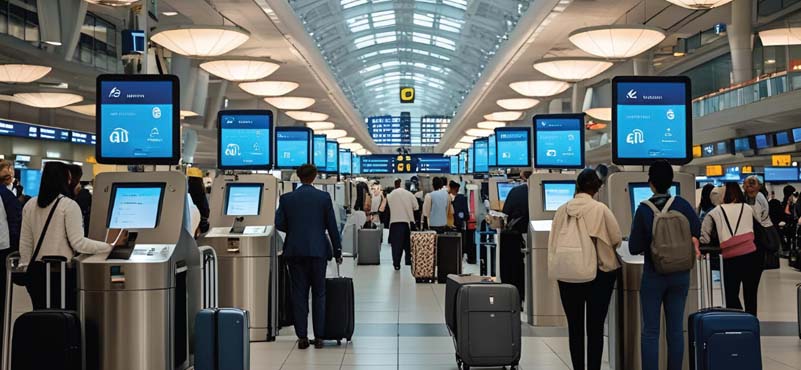Share the post "Will Asia and the Middle East be the Next Unmissable Opportunity for Indian Hotel Players?"
Indian tourists are increasingly choosing Asian destinations over traditional European and American ones. Many are selecting countries like Thailand, Vietnam, Singapore, and Dubai for their next vacation. Why? It’s quite straightforward; these locations are easier to get to, prices are reasonable, the visa process is hassle-free, and the hospitality is excellent. This shift presents a great opportunity for hospitality companies looking to grow globally while meeting the changing needs of Indian travelers.
The Rising Trend of Indian Outbound Travel to Asia

Managing Director, Hospitality &
Alternatives, Colliers India
The evidence is clear. Indian travelers have been focusing on Asian destinations in 2024 and 2025. One leading newspaper reported that travel bookings to places like Cambodia, Vietnam, and the Philippines have risen by 50 percent. This shows that Indian tourists are now opting for short-haul travel to Southeast Asia and the Middle East instead of long trips to Europe or North America. To put this in perspective, Thailand welcomed 2.1 million Indian visitors in 2024, making India the third-largest source market for Thailand, surpassing the previous record of 1.96 million Indian arrivals in 2019. In 2023, Dubai saw over 2.2 million Indian tourists, a 22% increase from the previous year. Vietnam has become another favorite, with over 500,000 visitors in 2024, an impressive 297% rebound from pre-COVID levels. In Singapore, Indian visitors exceeded 1 million in October 2024, two months earlier than in 2023.
Key Reasons Behind the Shift
Visa Simplicity: Let’s be honest, no one likes dealing with visa paperwork. Thailand waived visas for Indian citizens in 2024, while Malaysia, Kenya, and Iran eliminated visa requirements for Indian tourists entirely. This makes it easy for travelers to plan trips without worrying about restrictions.
Increase in Affordable Luxury: Reports show that Indian tourists are willing to spend up to $7,000 on trips abroad, especially to the USA and EU countries, and they find great value in Asian destinations. A decent hotel in London might cost over $400 per night, while you can enjoy luxury in Bangkok or Dubai for less than $200 and receive excellent service.
Superior Service Standards: European destinations often overlook what Indian travelers seek. They want more than just a place to stay; they desire warm and personal hospitality. Asian hotels offer seamless experiences, from welcoming guests with refreshing coconut water to a hassle-free checkout without surprise fees.
Direct Flights and Better Connectivity: It’s become much easier to fly directly to Bangkok or Dubai rather than endure long-haul journeys with multiple layovers to Europe or America. In fact, sometimes it’s cheaper to travel to Bali or Thailand than to vacation in Goa or Rajasthan. More airlines are providing direct routes from Indian cities to Asian countries.

Why Indian Hotel Owners Should Consider Buying Hotels in Asia
Low Pricing Pressure: With demand for hotels in high tourism cities rising, Indian investors can feel confident that property values won’t drop significantly after purchase. This supports better planning for returns. After COVID-19 restrictions were lifted, many hotels in Asian countries saw significant price corrections, making current prices attractive before any potential bubbles form due to over-tourism.
Higher Return on Investment Prospects: With low pricing pressure and increased demand, buying hotels can result in a higher return on investment.
Higher Distressed Opportunities: Market corrections have created appealing acquisition chances at favorable prices. Many hotel owners struggled with high maintenance costs after the pandemic and have had to close down. This situation led large asset management firms to buy distressed properties at lower costs, refurbish them, and reopen them.
Lower Acquisition/Debt Costs: Since the beginning of this year, the RBI has cut interest rates by 50 basis points, each time to boost economic activity. This creates a favorable environment for companies to reduce debt costs to fund their expansion into other cities.
Foreign Government Support: Several Asian countries are offering incentives to attract foreign investment in hospitality. For example, Thailand has a visa-free policy for Indians, Malaysia provides income tax exemptions and allowances, and Singapore’s Tourism Development Incentive (DTDi) offers tax deductions of up to 200% on expenses for international expansion in hospitality.
Established Tourist Flows and Growing Demand: With 2.1 million Indians visiting Thailand alone in 2024, hotel owners acquiring properties in these markets have a built-in customer base. In the first half of 2024, 15 million Indians traveled internationally, reflecting a 14% year-on-year increase, ensuring steady demand. Additionally, Indian hotel groups are already familiar with service standards appealing to Indian travelers, making the transition to new Asian markets easier.
Future-Proof Investment: By 2027, India is expected to become the fifth-largest outbound travel market in the world. Entering the market early will position companies for decades of growth.
Why Hotel Owners and Brands Should Act Now
The Indian hospitality market has abundant cash and is expected to attract USD 1 billion by 2028. There were 22 hotel transactions in 2023, the highest number in the past decade. McKinsey predicts India will become the fourth-largest domestic travel market by 2030, and by 2034, the outbound spending by Indian travelers is expected to more than double to $76.8 billion, making India the seventh-largest travel spender worldwide. It’s not just about money; timing is crucial. Now is a prime time to seize opportunities to build brand loyalty with Indian customers before competition increases.
Takeaway
India’s outbound tourism industry is set for significant growth, with a projected market value of around $18.8 billion in 2024, expanding at a CAGR of 11.4% to reach $55.4 billion by 2034. Indian travelers are looking for destinations that offer value, convenience, and genuine hospitality. All of these elements can be found in the Asian market. The hospitality industry must take advantage of this surge in India’s outbound tourism and adjust its approach to align with traveler preferences to achieve sustainable growth and better investment returns.





